At one time, HTC was the leading Android phone manufacturer. After all, it made both the very first Android phone, 2008’s HTC Dream/T-Mobile G1 and the first Google Nexus phone, the Nexus One in 2010. Unfortunately, over the years, HTC got lost and even though its 2013 One M7 was one of my favourite phones that year, its successors, the One M8 and last year’s One M9 were not as well received, especially their camera performance. Although not bad devices per se, the One M8 only just made our 2014 “Top 10 smartphones for business” list and we did not include the M9 on last year’s list.
For 2016, then, HTC clearly needs a winner if it is going return to its former glory, and with the new HTC 10, it looks like it built the right horse. In ditching the “One” moniker, with the 10 HTC has also excised most of the issues that plagued its predecessors. The HTC 10 is available in Canada exclusively on Bell and unlocked directly from HTC — read on to see why it has finally made a premium flagship that competes with the best that Samsung, LG, and Apple have to offer.
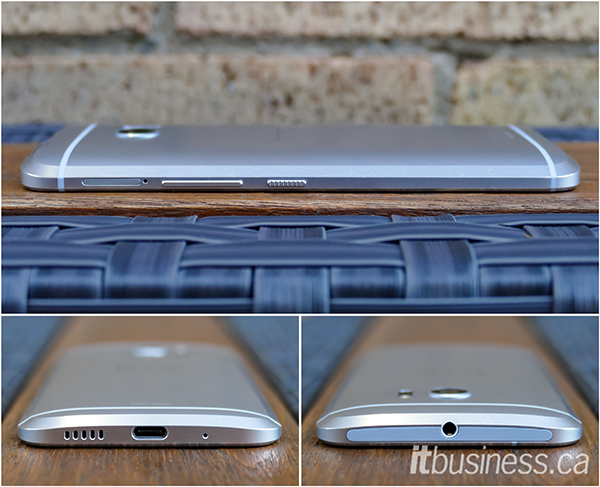
| HTC 10 SPECIFICATIONS | |
| Screen | 5.2-inch Quad HD Super LCD 5 @ 2560 x 1440 (564 PPI) |
| SoC | 2.15 GHz/1.6 GHz quad-core Qualcomm Snapdragon 820 w/Adreno 530 GPU |
| RAM | 4 GB LPDDR4 |
| Storage | 32 GB eMMC NAND, microSD (up to 2 TB) |
| Battery | 3,000 mAh (non-removable) with Quick Charge 3.0 |
| Speakers | HTC BoomSound |
| Rear Camera | 12.3 MP 1.55 µm pixel Sony IMX377 Exmor R sensor w/OIS, f/1.8, IR laser AF, dual-tone LED flash, 4K UHD video |
| Front Camera | 5 MP 1.34?m Samsung S5K4E6 sensor w/OIS, f/1.8, up to 86-degree wide angle, FHD (1080p) video |
| LTE Bands | Band 1/2/3/4/5/7/12/13/17/20/28/29/30 (Cat. 9 LTE up to 450 Mbps) |
| Connectivity | Wi-Fi 802.11 a/b/g/n/ac 2.4G + 5GHz, Bluetooth 4.2 LE, USB 3.1 Gen 1 (Type-C), NFC |
| Build Materials & Colour | Metal and Gorilla Glass 3. Available in Glacier Silver (Bell & unlocked model) and Carbon Gray (unlocked model only) |
| Element Protection | None |
| Biometrics | Fingerprint reader |
| Dimensions & Weight | 145.9 x 71.9 x 9.0 mm (5.74 x 2.83 x 0.35 in), 161g (5.68 oz) |
| OS | Android 6.0.1 (Marshmallow) with HTC Sense |
| Availability & Pricing | Bell and HTC (unlocked model). Starting at $350 on a 2-year term, $900 outright for Bell model. $1000 outright for unlocked model. |
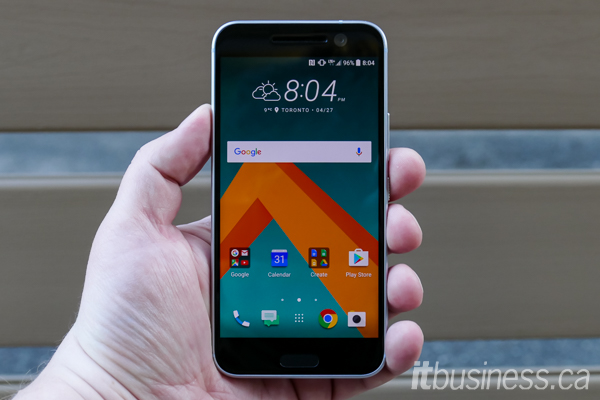
What we like
The HTC 10 sports the same familiar metal unibody design that has become a trademark of its flagship phones, and as usual, it is impeccably crafted and befitting a high-end device. For 2016, the back has beveled edges that make it more comfortable to hold, and around front, the Gorilla Glass has an iPhone-like curved edge and covers the entire area for a more seamless look. Size-wise, with a 5.2-inch screen, for many the 10 is going to hit the Goldilocks’ mark – “just right.” The display is quad HD, a first for a North American HTC phone, and considerably sharper than its predecessor’s 1080p screen and comparable in quality to those of other 2016 flagships.
First introduced on last year’s mid-range HTC One A9, the 10 has a capacitive fingerprint reader that also doubles as a home button. The reader is easy to setup and very fast and accurate in use. It can be used for authentication (both login and with supported applications) and mobile payment solutions. The 10 also reverts to having capacitive back and recent apps keys on either side of the home button, rather than the on-screen controls used on the M8 and M9 that took away screen real estate from your apps.
Although for business users this feature isn’t especially important, the 10 has a dedicated headphone amp for superior audio quality when compared to most other smartphones. Although it doesn’t have front-facing stereo speakers like the previous One phones, it does have an amplified “BoomSound” speaker for high-quality (and loud) output, which is great when using the speakerphone.
| Benchmark Results | |||||
| HTC 10 | Galaxy S7 | Nexus 5X | iPhone 6S | Galaxy S6 | |
| Overall System: Antutu | 137,704 | 130,066 | 74,584 | N/A* | 76,929 |
| Overall System: PCMark |
6,171 | 4,726 | 4,211 | N/A* | 5,028 |
| CPU: Geekbench 3 Pro Multi-Core | 5,221 | 6,504 | 3,574 | 4,456 | 4,803 |
| GPU: 3DMark Ice Storm Unlimited | 27,831 | 28,641 | 15,715 | 28,319 | 21,450 |
| GPU: GFXBench Manhattan Off-Screen | 41 fps | 38 fps | 16 fps | 40 fps | 26 fps |
| PCMark Battery Life Test | 6 hr 29 min | 7 hr 38 min | 6 hr 41 min | N/A* | 6 hr 6 min |
(* these tests are not available on iOS)
The HTC 10 is equipped with Qualcomm’s latest system on a chip (SoC), the quad-core Snapdragon 820, and unlike last year’s 810 chip that was plagued with overheating issues, this new chip runs a lot cooler. With this SoC powering it, along with 4 GB of RAM, the 10 posts some of the best performance numbers we’ve ever seen from a smartphone and bests Samsung’s Galaxy S7.
Unlike Samsung, HTC never dropped microSD expandable storage, and it returns on the 10 with the option to use it with Android Marshmallow’s adoptable storage feature. This allows you to turn the microSD card into a more or less permanent addition to the 10’s 32GB of storage. Keep in mind you need a fast SD card (UHS-1) to use this feature so as not to impact device performance, and if you remove it, your phone will not function properly.
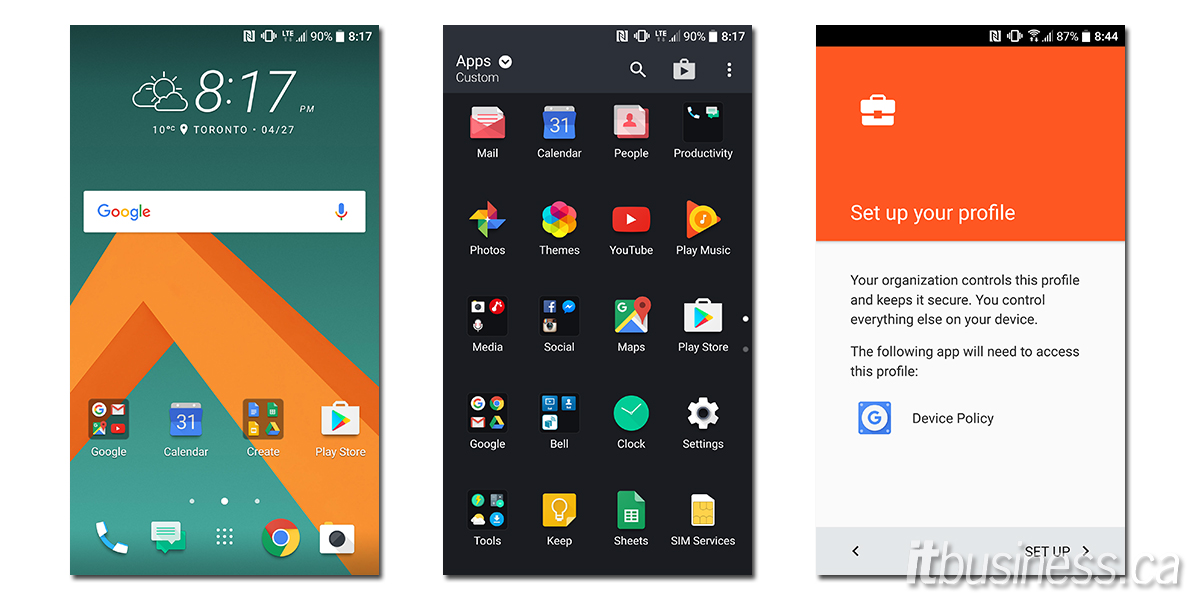
HTC’s Sense UI has been a staple of its phone’s user experience from the beginning and as far as Android skins go, it’s one of the least offensive. Starting on the One A9, HTC has been paring Sense back and removing applications that duplicated core Google ones that are included with Android. That means that although at first glance the 10’s UI does look quite a bit different than stock Android (which we still think offers the best Android experience), under the surface it’s a lot closer to Google’s vision than what you find on other Android flagships. It also supports Android for Work to separate your work and personal data if the 10 is going to be used as in the office.
The 10’s substantially improved camera uses the same 12.3 MP 1.55 µm Sony pixel IMX377 Exmor R sensor as the Nexus 6P, whose camera we liked, and combines it with a faster f/1.8 lens and optical image stabilization (OIS) for even better performance. When compared the One M9 and One M8’s output, the images produced by the 10 are massively better and in most cases as good as those shot by other 2016 flagship phones. Low light performance was the biggest weakness of the older HTC model’s cameras, and as you can see from the sample below, the HTC 10 does much better in the dark.
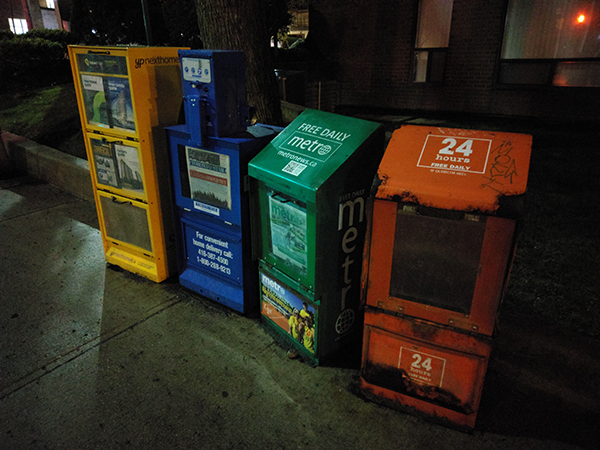
What we don’t like
Although we do think the HTC 10 is a very well made and attractive phone, its design is perhaps a tad boring. Despite being thicker than the Galaxy S7, it still has a camera bump, instead of it being flush with the back. Also, while its performance is excellent, its battery life is not, at least compared to other 2016 phones. Despite having a 3,000 mAh battery like the S7, it lasted an hour less in our test (which keeps the screen on continuously) and a couple of hours less when using it day to day. This is because the 10’s 820 chip is likely more power-hungry than the Exynos used by the S7. Lastly, even though we were impressed with its camera, it’s not quite as good as the S7’s, and its low light images suffer from excessive noise due to the camera software choosing higher ISOs than necessary.
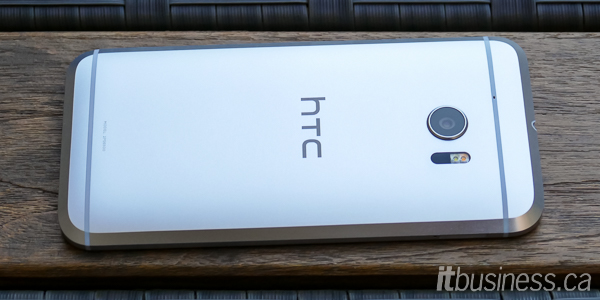
A return to form for HTC
With the 10, HTC is back in the smartphone game. It has produced an attractive, well-made metal device with blazing performance, a great camera, and excellent software. It’s only held back from leading the pack by some small issues like battery life and its camera’s low light performance, but overall we highly recommend this phone. It’s also good to see that if you don’t want to be tied to a carrier contract, you can buy it unlocked directly from HTC.
The HTC 10 is available at Bell Canada starting at $350 on a two-year term and from HTC unlocked for $1,000.
Our Rating
Design and Hardware: 9/10
Performance: 9.5/10
Battery life: 8.5/10
Software: 9/10
Camera: 8/10
